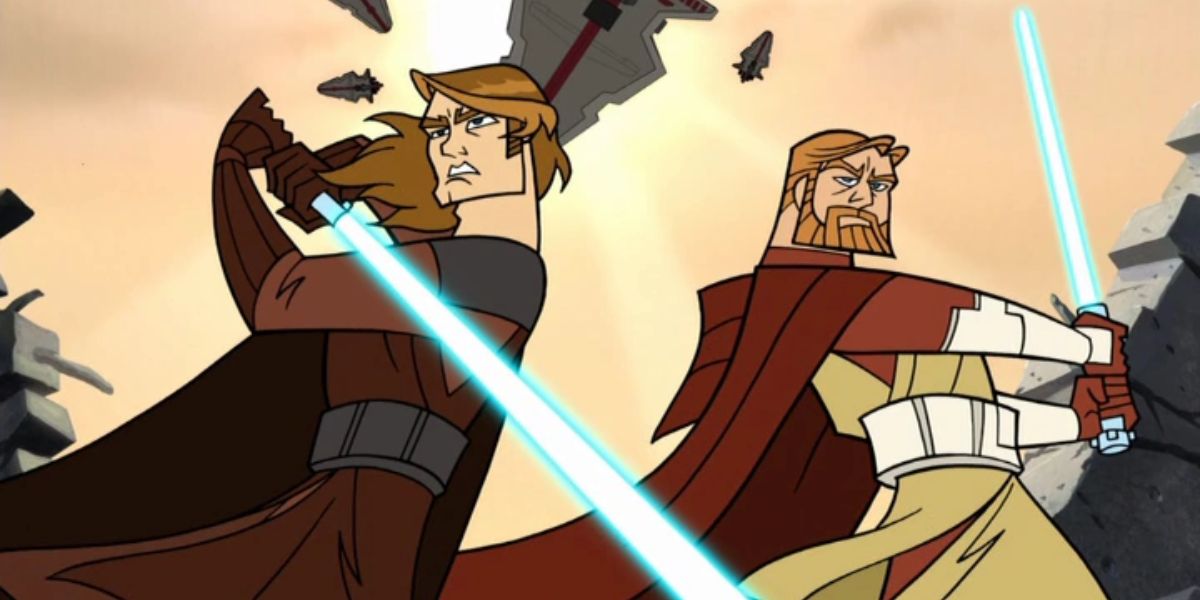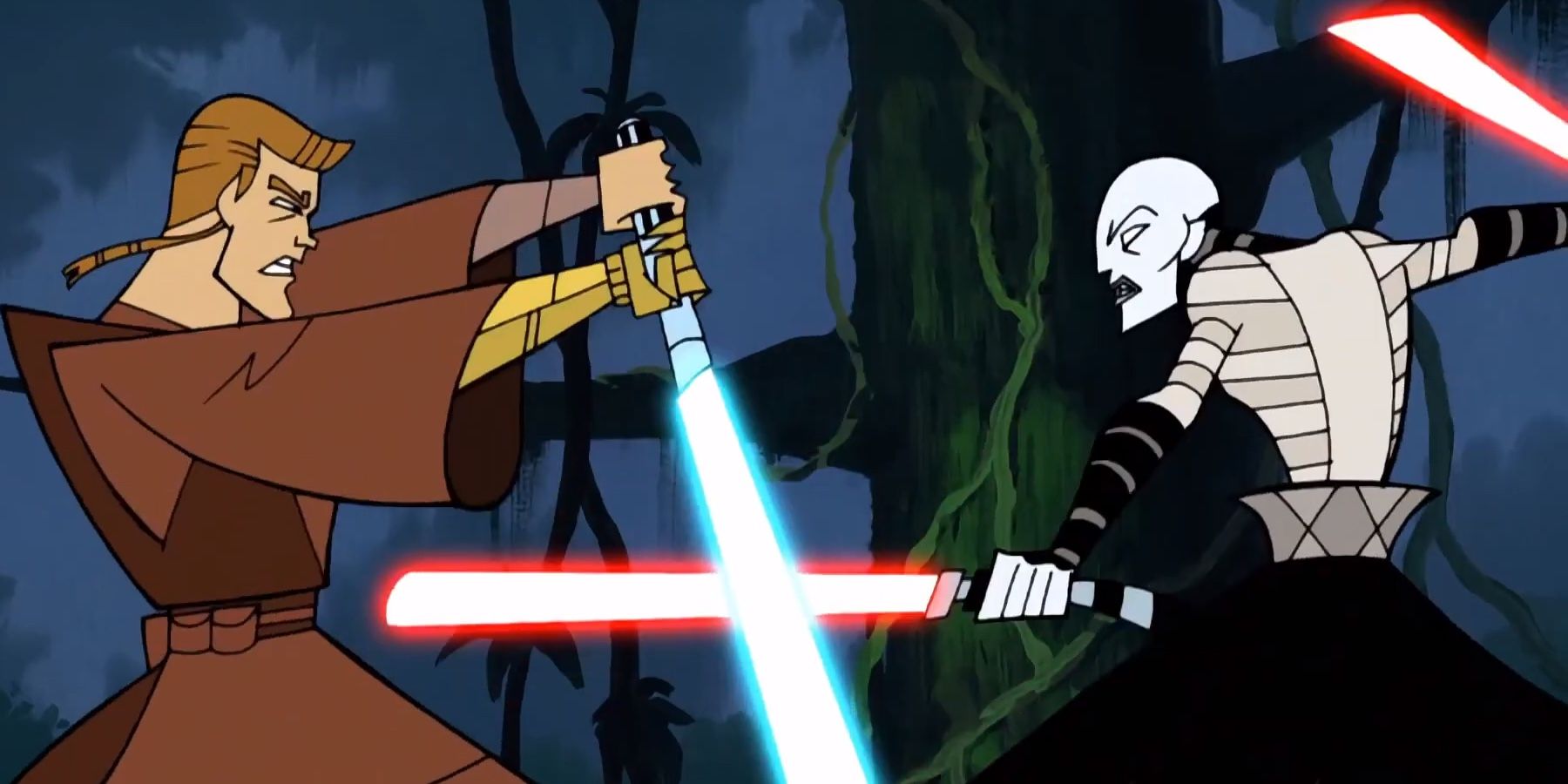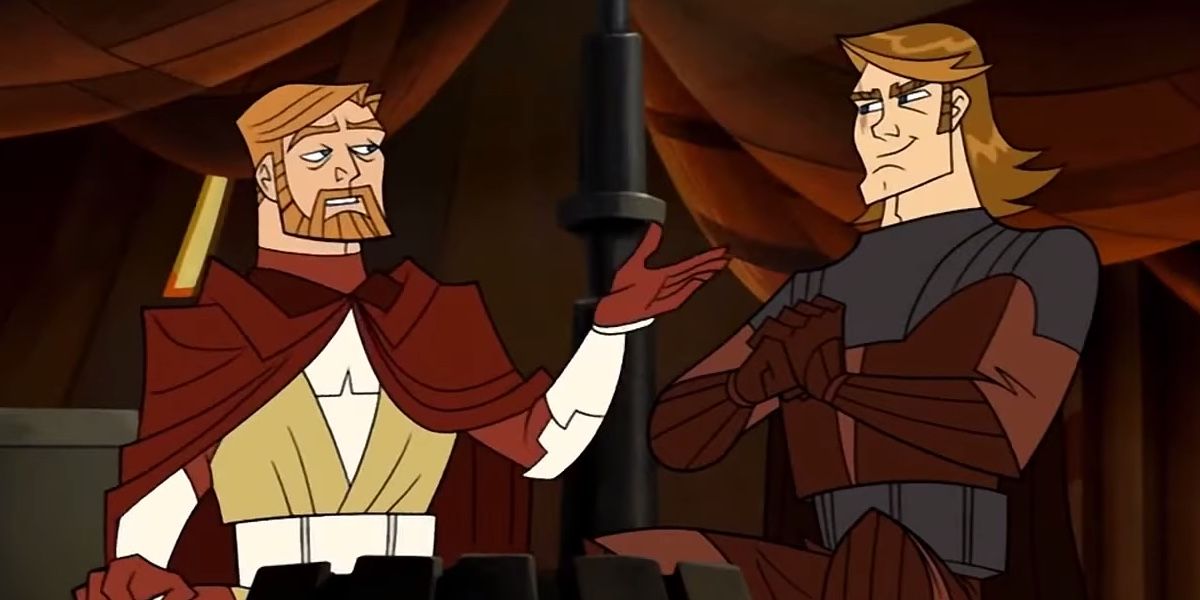The recent addition of Genndy Tartakovsky's Emmy Award-winning Star Wars: Clone Wars to Disney+ is fantastic news for those who grew up when the Star Wars prequel trilogy was still in theaters. Long before Star Wars: The Clone Wars salvaged George Lucas' pre-Empire storyline into something emotionally compelling, fans had to be content with a plot bogged down by wooden acting, boring political talks and noticeable green screen effects. It certainly had awesome lightsabers fights, but not engaging characters.
Star Wars: Clone Wars, a 2003 animated micro-series that ran in between Attack of the Clones and Revenge of the Sith, changed that by giving fans their first real look into the Clone Wars as a spectacle. Featuring epic stylized battles between Jedi, Sith, Clones and Droids, the show ran for three seasons, two of which were broken up into two to three minute intervals while the finale increased its length to 12 minutes for a more specific story about the war's final days. Yet inside that limited screen time, Tartakovsky engineered a conflict of such massive scale, documenting countless worlds overwrought with violence and the variety of battle tactics waged across their surfaces.
From aerial dogfights and underwater battles to citywide assaults, these war sequences regularly tested the prowess of Anakin Skywalker (Mat Lucas) and Obi-Wan Kenobi (James Arnold Taylor) in combat. Likewise, they also provided screen time to various Jedi from The Phantom Menace and Attack of the Clones like Kit Fisto, Ki-Adi-Mundi, Luminara Unduli, Barriss Offee and Shaak Ti who, up until that point, were just cool-looking background extras. Such variety helped enlighten viewers on just how far the Clone Wars had spread across the galaxy, all orchestrated by Darth Sidious and Count Dooku as part of their grand scheme to destroy the Jedi for good.
Utilizing a dynamic 2D animation style similar to his work on Samurai Jack, Tartakovsky exaggerated the Jedi's combat and Force abilities to anime-level proportions to create more potent action scenes. Mace Windu didn't just swing a purple lightsaber, but demolished an entire army of Super Battle Droids with Force hand-to-hand combat moves while hurling defeated droid parts into other droids like shrapnel. Yoda went from force-jumping around Christopher Lee to hack-and-slashing camouflaged droids on the planet Ilum at breakneck speeds. The Jedi, in other words, became pretty powerful, which only added to the grandiosity of each fight they partook in against overwhelming odds.
Over the top as it was, Clone Wars' action also doubled as visual storytelling, building up characters and lore without the need for heavy exposition. This allowed something like Anakin's lightsaber duel with pre-The Clone Wars Assaj Ventress to simultaneously work as an amazing multi-part battle while foreshadowing his fall to the Dark Side via subtext.
Arguably, the biggest benefactor of this visual style was General Grievous, whose terrifying debut set a hype bar his wheezing Revenge of the Sith counterpart never matched. That battle firmly established the droid commander as a 7-foot tall cybernetic behemoth who could not only trade lightsabers with five Jedi at once, but overwhelm them all without breaking a sweat. By the time he showed up on Coruscant to kidnap Chancellor Palpatine, audiences knew that General Grievous' presence immensely raised the stakes for anyone in his way, a trait Dave Filoni's movie-adjacent Grievous could have used more of in The Clone Wars.
Even with all this ongoing action happening, the show still prioritized Anakin and Obi-Wan's evolving relationship. Granted, by today's standards, Clone Wars' Anakin and Obi-Wan can a feel a bit like CliffsNotes versions of their CGI selves, who developed this bond more thoroughly across seven seasons of television to make Anakin's downfall feel legitimately tragic. For the early 2000s, however, it was a semi-cohesive improvement over Hayden Christensen's characterization, visually showing how Anakin evolved from petulant Padawan to a brash, but experienced warrior alongside his Master on the battlefield. Clone Wars gave an indication of what these two Jedi becoming friends and brothers in arms actually looked like, a dynamic the prequel trilogy attempted with mixed success.
Hard as it might be for some fans to envision a Clone Wars timeline without Ahsoka Tano or Captain Rex, Star Wars: Clone Wars still holds up. More than simply a non-canon relic of a bygone era, it laid the template upon which The Clone Wars earned its acclaim through a combination of scale, action and subtle character moments, creating a thriving, alien universe that fans dubbed superior to what Lucas was doing on the big screen. By giving its battles and characters such an epic feel, Clone Wars ultimately made the Star Wars prequels' key conflict a story worth revisiting.
Star Wars: Clone Wars - Volume I and Star Wars: Clone Wars - Volume II will be available to stream on Disney+ starting Friday, April 2.



